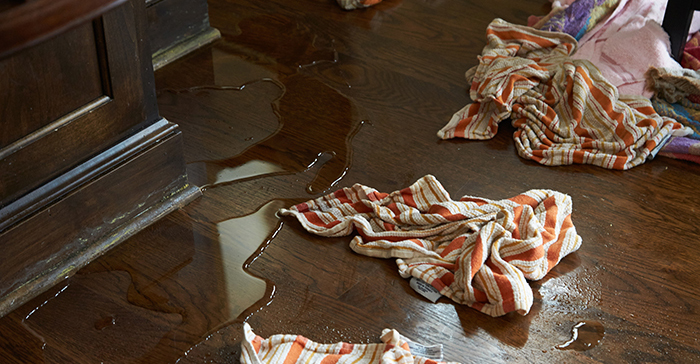The content down below about Common Causes of Water Damage in a Bathroom is extremely stimulating. You should take a peek.

The restroom is exceptionally susceptible for damp buildup and also prospective water damages as a result of the regular use water in it. This article provides easy evaluation strategies to aid identifying water damages hazards.
The frequent use of water in the shower room makes it extremely susceptible for wet build-up and prospective water damage. By evaluating it on a regular basis, you can reduce water relevant damages.
The complying with set of examinations is easy to carry out and must be done when in every three months in order to maintain your bathroom in good shape and also to prevent prospective water problems caused by the bath tub, the shower, pipe joints and plumbing, sinks, cupboards, and also the toilet
Do not overlook executing these inspections as well as be complete while executing them. Bear in mind that these straightforward evaluations can conserve you a great deal of cash by providing early indicators for water damages
Bath tub and also Shower
The shower and bathtub need special interest and also upkeep. Check the tiles as well as replace if split. Make certain that there is no missing out on cement in between the tiles. Examine and replace broken caulking at joints where the walls satisfy the floor or the tub. Blocked drains pipes as well as pipelines issues will certainly protect against the bath tub from drying and may indicate major issues below the tub. Talk to an expert right away to prevent structural damage. Take notice of discolorations or soft areas around the tub wall surfaces as they might suggest an interior leak.
Plumbing
Signs for water damages are difficult to find considering that a lot of pipes are installed inside the wall surfaces.
Pay unique attention to flooring and walls wetness as well as discolorations as they might show an invisible plumbing problem. Check moisture levels in adjacent rooms as well.
Sinks and Cabinets
Sinks and cabinets are exposed to moisture and moisture day-to-day and also are frequently overlooked. Inspect regularly under the sink and on the counter top above it. Repair any kind of drip in the catch as it may suggest drain problems. Look around the sink, slow-moving draining pipelines might indicate a blocked drainpipe. Replace sink seals if they are cracked or loosened.
The Commode
The bathroom is a vulnerable water joint. Inspect the water lines and look for leaks around the toilet seat, in the tube, as well as under the water tank. If you detect any kind of indications of moisture on the flooring around the bathroom, look for leakages in the toilet rim and also storage tank seals.
Be aware that hanging commode bowl deodorants increases the opportunities for blockages.
Water Damage Signs In The Bathroom To Avoid Cleanup
Musty smell
This is one of the easiest signs to catch because musty smells are so odorous. The damp, earthy, moldy smell should be a big red flag. The smell will develop when moisture gets trapped in surfaces, and begins to facilitate mold growth. Leaking pipes under cabinets, inside walls, and behind shower fixtures will cause moisture to stay trapped and not dry, which will lead to mold growth and spread. As soon as you notice any musty smells in your bathroom, have it checked for hidden water damage and cleanup signs.
Visible mold
If the smell isn’t there to give it away, sometimes you will actually see mold growth. Finding mold in your bathroom is a serious problem, because mold is very harmful to your health. By the time mold growth is visible, it also means that water damage has already occurred and been present for some time. The only way the mold problem can be resolved is to find the source of the moisture and get it stopped. To safely and adequately remove mold, you need to have professionals handle the remediation. Do not waste any time in getting mold problems addressed, fixed, and sanitized so that you can protect you and your family from the many respiratory symptoms caused by mold exposure.
Damaged floors
Bathroom floors should be able to withstand some exposure to water while still remaining in good condition. However, when excess exposure or water leaks occur, they will begin to damage even the most water-resistant flooring. If you notice any cracking, bubbling, staining, or warping on your bathroom floors, there is probably a water leak somewhere causing the distortion. If you notice areas of the floor have become softer, or even have a spongy feeling, there is probably damage to the subfloor. Subflooring is typically made up of plywood. When plywood is exposed to water or moisture, it will absorb it. Once it has become saturated, the weight of the excess water will cause the wood to swell and soften. Check the floors in your bathroom frequently to catch any of these sings before they lead to damaged subflooring.
Changes on walls
When water leaks behind walls, it will cause changes in the drywall. Peeling plaster, blistering paint, and soggy wallpaper are all good indicators that excess water is building up behind the wall. Water leaking behind drywall will cause it to swell and be soft to the tough. If you start to notice gaps along the trim of your walls, or where tile meets the wall, it could also be a strong indicator that there is a leak behind the wall. Any changes, distortion, or damage on the walls should be evaluated as soon as you notice it to prevent further water damage and cleanup.

As a passionate person who reads on How to Fix a Water Damage Bathroom, I think sharing that piece of content was worth the trouble. Make sure you set aside a second to distribute this blog post if you enjoyed it. Thanks so much for taking the time to read it.
Book A Service